Darjeeling: In the northernmost part of West Bengal, Darjeeling is a town and municipality that can be found. In the Eastern Himalayas, its average altitude is 2,045 meters (6,709 ft). The easternmost province of Nepal is situated to the west of Darjeeling, while the Kingdom of Bhutan, Sikkim in the Indian state, and the Tibet Autonomous Region region in China are located to its north. To the south and southeast, one can find Bangladesh, while most of West Bengal lies to the southwest and is connected to the Darjeeling region by a narrow strip. To the north lies Kangchenjunga, the world’s third-highest mountain, which is easily visible on clear days. In the early 1800s, Darjeeling was recognized as a potential summer retreat for British officials, soldiers, and their families during the East India Company’s reign in India. The Kingdom of Sikkim leased the narrow mountain ridge, which was later annexed by British India. The cultivation of tea on the slopes beneath Darjeeling was a fruitful experiment. To clear forests, build cottages in the European style, and work on the tea plantations, thousands of Nepalese laborers. Deforestation in general led to the displacement of native populations. The British-domiciled children were educated in residential schools set up in and around Darjeeling, India. In the late 19th century, the Darjeeling Himalayan Railway, a new mountain railway, was transporting summer residents to the town and exporting tea to markets. After the British left Darjeeling in 1947, wealthy Indians purchased cottages on the plains, while out-of-town Indian business owners and conglomerates acquired tea plantations in the area.
Darjeeling’s population today is largely composed of the descendants of laborers from its original development, including both indigenous and immigrant labor. Despite the official recognition of Nepali as their common language at state and federal levels in India, the recognition has not provided significant employment opportunities for the language’s speakers or increased their political influence. Tourism and the tea industry are the mainstays of the town’s economy. Deforestation following India’s independence has had an impact on the environment, with the town’s hydration coming from perennial springs. Due to the population boom, uncontrolled construction, traffic congestion, and water shortages, Darjeeling has faced severe challenges. Several young people who were educated in government schools have turned to emigration as there are no equivalent jobs for their abilities. They have faced discrimination and racism in Indian cities, much like out-migration from other parts of northeastern India.
The diversity and cosmopolitanism of Darjeeling’s culture are the result of the intermixing and changing attitudes of various ethnic groups. Fermented food and beverages are a staple in the local cuisine. The mid-19th century saw Darjeeling become a tourist destination. In 1999, the Darjeeling Himalayan Railway was granted World Heritage Site status by UNESCO after an international appeal. The World Trade Organization granted Darjeeling tea geographical designation in 2005, with the aim of securing the brand and aiding the growth of its production area.
History
In the Eastern Himalayas, Darjeeling is situated between the Mechi and Teesta rivers. It was situated in a borderland that had caused aspirations and vulnerabilities in several South Asian states during the 18th century. This was claimed by the Chogyal-ruler of the northern Kingdom of Sikkim for most of that century. Darjeeling was incorporated into the Gurkha kingdom of Nepal during the last decades. The Kingdom of Bhutan was beyond the Teesta when their army came to a halt. The Darjeeling hills were taken up by the English East India Company in the early 1800s. The Lepcha and Limbu tribes were the primary indigenous groups in Darjeeling during that period. Following the Anglo-Nepalese War, when the Company’s army defeated the Gurkhas, it began meddling in territorial matters. Two treaties, the Treaty of Sugauli and the later Treatied Titalia, were signed during the war between 1814 and 1816, with both requiring Nepal to relinquish its Darjeeling land to Sikkim. Captain George Lloyd and J. were East India Company officials in 1829,[17]. W. While pursuing a border dispute between Nepal and Sikkim, Grant passed by eleven peaks that they believed were ideal for constructing sanitoriums for the British or shelters to warm up in from the heat of India’s plains. The Governor-General of India, Lord William Bentinck, agreed with Lloyd’s proposal by suggesting a limited army contingent for border surveillance.
Top 20 Best Places in Darjeeling | Best Tourist Attraction
1. Darjeeling Himalayan Railway,
A narrow gauge train, the Darjeeling Himalayan Railway (DHR), also known as the ‘Darjeeling Toy Train’, runs between New Jalpaiguri and Dar Jeelung in West Bengal, India. The construction of this 88-kilometer railway line began in 1879 and has been a popular tourist attraction since then. The Darjeeling Toy Train’s journey offers breathtaking views of the mountains and passes through nearby villages and markets, with children playing in the background.
The Darjeeling Himalayan Railway, an engineering marvel, provides crucial transportation connections between various regions of the Darjeeling hills and lower plains. In what way can a small steam engine transport mini coaches to avoid nearly unattainable steep slopes and gradients? Perhaps this is why the Darjeeling Toy Train was declared a UNESCO World Heritage Site on 2 December 1999.
The site was later renamed the Mountain Railways of India after two more lines were installed. The ride on this ancient transportation is unquestionably calming and charming, but it also holds significance as it was the source of the country’s first and most significant mountain transportation network.
Must Know Darjeeling Himalayan Railway Before Visiting
Note: The Darjeeling Himalayan Railway’s “Toy Train” connects Darjal with Siliguri, passes through the highest altitude train station in India at Ghum, and runs between New Jalpaiguri and Darjeeling.
The train leaves from Darjeeling station and heads to Ghum where there is a 25-minute stop for visitors to see the DHR Museum. Batasia Loop is a 10-minute stop on the way back that offers breathtaking views of Mt. The journey to Darjeeling and Kanchenjunga.
2. Tiger Hill
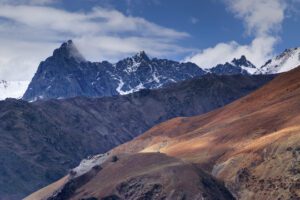
At a height of 2590 meters and 13 kilometers from Darjeeling, Tiger Hill is the most well-known attraction due to its breathtaking sunrise views, which feature the illuminated peaks of Kanchenjunga at lower elevations. The sight of snow-capped mountains amidst cotton clouds is so impressive that tourists from all over the country flock to Tiger Hill. The UNESCO World Heritage Site of Darjeeling Himalayan Railway boasts a railway station called Ghoom, which is also located here at the summit.
Starting from Darjeeling, the duration is 3 hours. By 4:30 AM you’ll reach Tiger Hill. At 4:00 PM, the start time is 4. In winter, the sunrise time is delayed at 15 AM. A group of jeeps and cars obstructs the roads during peak times. To reach the sunrise, a brief walk is required from the parking area. Travel agencies in the city sell cars or Innovas for INR 1200/INR 1800, or they charge INI 200 per person.
3. Darjeeling Ropeway

Darjeeling is a world-renowned hill station that offers visitors countless scenic options, including snow-clad mountains and quaint tea estates in every valley. The Darjeeling Ropeway is a significant attraction in the city, offering travelers an array of divine panoramas while traversing through the mesmerizing valley.
In 1968, the Darjeeling Ropeway was established as India’s first cable car system for tea gardens in valleys with limited access. Presently, it is a highly sought-after tourist spot that welcomes visitors year after year to fully appreciate the scenic beauty of Darjeeling.
At an altitude of 7000 feet, the cable car journey from the North Point in Singamari to the Singla Bazaar, with space for 6 individuals on each one. The view of Darjeeling’s tea estates, waterfalls cascading, and Kanchenjunga mountains makes this experience a must-see for tourists.
Travelers can take advantage of the gondola’s moderate speed to capture some stunning photos. During the last part of the cable car ride, passengers can enjoy some tea gardens and a small mountain cafe before returning to the Singamari base station.
4. Himalayan Mountaineering Institute

Himalayan Mountaineering Institute, Darjeeling is one of the world’s top mountaineers. Established on 4th November 1954, this program was designed to foster the interest of the public in mountaineering and to channel the youth’s surplus energy into a profitable and self-serving activity. The aim of this institute is to train mountaineers who are eager to excel in their endeavors.
The Himalayan Mountaineering Institute, situated in the hill station of Darjeeling, has gained a reputation as one of the world’s top mountaineers due to its picturesque location. The view of the 8586-meter-high peak of Kanchenjunga, the third-highest peak in the world, from this institute, is truly breathtaking.
Mountaineering is an adventure sport with a focus on scientific and entrepreneurial pursuits, according to the Himalayan Mountain Eating Institute. The climbing of mountains is not the only skill that a mountaineer can develop. He touches the ground and treats it with care. This grand institute’s focus on scientifically trained and deliberate techniques makes mountaineering an artful and purposeful sport.
The Himalayan Mountaineering Institute has trained more than 45000 students in its 63-year existence, with 2500 of them being international candidates. The thrill of climbing mountains in snowy terrain amid unspoiled nature is beyond words. This is a lifetime’s adventure.
5. Shopping in Darjeeling
With its tea plantations charming small markets and historic shopping centers, Darjeeling is a must-visit destination for anyone who enjoys the culture. You’ll be struck by the true flavors and aromas of the teas. Besides hoarding packets of tea leaves, visitors can also browse local goods such as handicraft items, woolen scarves and caps, and faux jewelry items (and more) from the city’s markets. If you’re heading to the Chowk Bazaar or The Mall Road, shopping in Darjeeling will be a delight.
Top places for shopping in Darjeeling
5.1. Nehru rode
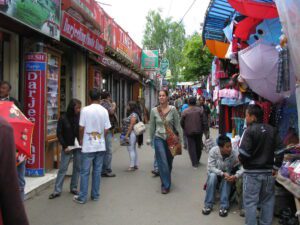
The locals of Darjeeling have established small shops in this market located on Hill Cart Road. Shopping enthusiasts will love Nehru Road as it offers a great opportunity to shop on the streets. An uphill path leads to the market. Several other branded stores opened branches in recent years. The State Government has recently opened a Handicrafts Emporium. Those who enjoy arts and crafts can purchase exquisite paintings for their living space. The Art Gallery in the area also houses art pieces made by local Bengali craftsmen and artisans. Most shops do not accept cards, so it is advisable to bring cash with you.
5.2. Batasia Loop Market

This market is named after its location. It is a street shopping in Ghum and Darjeeling on the loop line. For those who are passionate about shopping and know the tricks to save money, this is the spot. You can purchase a large number of bags without any financial strain. A toy train route that starts from here will surely add to the shopping experience in Darjeeling.
5.3. Ghoom Monastery Market

The peak of the beauty in the Ghoom Monastery and market nearby is best enjoyed during early mornings and evenings. The street’s colorful bunting banners create a pleasant atmosphere. You’ll feel at ease as you wander around the Ghoom market accompanied by Buddhist monks and buy Tibetan souvenirs.
5.4. Teesta Bazaar Market
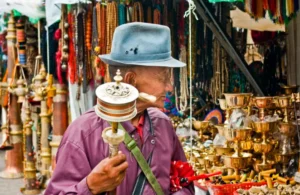
Teesta Bazar is situated on the banks of the Teesta River, near Kalimpong and Melli, an industrial town. This market is situated in a serene environment, ideal for tourists traveling from Siliguri to Gangtok on their journey to Darjeeling. Local artisans sell handcrafted art at a range of prices. Both affordable and expensive products can be obtained with significant effort and time. Enjoy a hot momo at one of the top shopping malls in Darjeeling.
What to buy: Hunting devices, shoes, wall paintings called ‘thangkas’, copper wares, crockery, silverware, and lanterns
Timing: 8:00 am To 6:00 pm
5.5.Pasupati Nagar Market

Pashupati Nagar Market is situated near the peaceful town of Mirik, surrounded by verdant hills. Another street market offers cheap imported products from Thailand. Located near the Nepal border, Pashupati Nagar Market offers picturesque natural scenery that will make shopping more enjoyable. The location also offers electronic goods at very low prices. The abundance of cosmetics available here is a delight for those who love fashion.
What to Buy: small souvenirs, woolen jackets, shawls and sweaters, Gorkha knives, books and Darjeeling tea
Timing: 9:00 am To 6:00 pm
5.6. The Mall Road
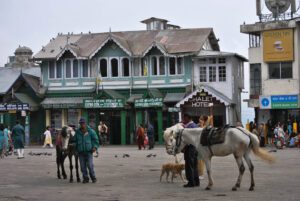
Missing out on The Mall Road in Darjeeling could mean you have missed out on the best shopping spot. You have the freedom to buy anything you desire from this location. Make sure you have enough time to explore this market. The Mall Road has an endless supply of tempting choices that will make you forget about time. Those who are fond of hunting can find interesting things to buy on Mall Road.
What to Buy: fancy jewelry gadgets, woolen cloths ranging from shawls, jackets, scarves and sweaters, Tibetan masks, and other handmade souvenirs.
Timing: 8:00 am To 7:00 pm
6. Darjeeling Rock Garden
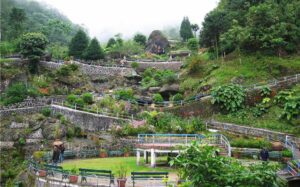
A stunning picnic spot with a terraced garden and natural fall, known as Rock Garden, is situated 10 km from Darjeeling. The Barbotey Rock Garden is renowned for its picturesque hill stream and impressive flower gardens and sitting arrangements on the slope. This location is highly recommended by nature enthusiasts who visit Darjeeling.
The journey to Darjeeling Rock Garden is not just a scenic sight but also consists of sweeping hills, greenery, sharp hairpin turns, and steep roads that lead to the amazing view of Rock Gardens, located between clouds and the peaceful Chunnu Summer-fall. The tourist spot is encompassed by tea gardens and flower gardens, accompanied by a serene lake at the summit where visitors can unwind after completing errands.
7. Singalila National Park
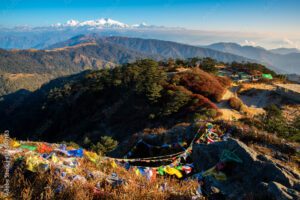
At a height of more than 7,000 feet above sea level, the Singalila National Park in West Bengal is the highest national park. The land area of the national park, which was once a wildlife reserve, is breathtakingly beautiful. A vast area of 60 km2 is covered by unspoiled rhododendron forests, alpine valleys, and rare animals and orchids. It is renowned for its stunning Himalayan peaks, which provide breathtaking views of the majestic Himalis from Nepal to Sikkim and Bhutan. The rare red panda and other Himalayan animals can be found in Singalila. Singalila National Park is a protected area that is well-maintained and serves as a secluded sanctuary for wild animals, with permission to engage in activities such as forest development, hunting, and grazing. The national park is a crucial part of the journey and is truly enchanting for those who travel. Named after the Singalila Spur, it travels through the park, starting from the north and ending at the south of the Ganges Valley, before reaching the peak at Malaya.
8. Nightingale Park

The Nightingale Park, a public park area in Darjeeling’s hill station, is renowned for its breathtaking views of the Kanchenjunga ranges and is frequented by both tourists and locals. It is the perfect spot to unwind amid verdant greenery and swaying breezes. In the past, when Sir Thomas Tartan owned a Bungalow in Britain, the park was known as ‘The Shrubbery’ because of its private courtyard.
This oval-shaped park is encircled by pebbled walkways at the entrance, which is flanked by a covered archway. As Nightingale Park is situated on a dismal elevated path, you must climb fewer steps to reach the green area. The park was inaccessible to visitors for approximately four years until it was reopened in 2011. A musical fountain and a massive statue of Lord Shiva are among the other impressive sights.
9. Japanese peace pagodas
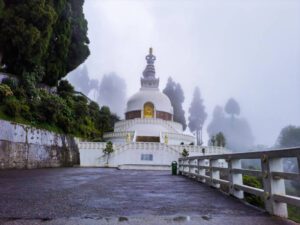
One of the Japanese peace pagodas, also called Peace Pagoda in Darjeeling and referred to as the “Japanese Peace” panga”, is designed to promote unity and harmony among people from different social backgrounds. Known for its peaceful tranquility, it is the ideal spot for those seeking peace and serenity with views of snow-covered peaks like the Kanchenjunga peak.
The Peace Pagoda was erected during the tenure of Nichidatsu Fujii, a Buddhist monk hailing from Japan. The foundation stone was erected on 3 November 1972 and opened on 1 November 1992. Devised by M. The construction of Ohka lasted for 36 months. The pagoda, which is home to the four avatars of Buddha, such as Maitreya Buddha was built to unite people from different castes in search of peace.
10. Sandakphu Peak
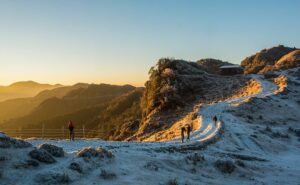
West Bengal’s highest peak, Sandakphu Peak (11,941 Feet), is the tallest. Singalila National Park is situated near the highest point of SINGALILILA RANCH in the Darjeeling district, which is almost at the edge of Nepal. Four of the world’s highest peaks can be seen from Sandakphu, the highest point in West Bengal. Mountain Kanchendzonga is the most stunning view. Reaching the summit by car or hiking is possible. A 51 km long climb up the hill from Manebhanjan is the highlight of the trek.
The Himalayan Cobra Lilies’ high numbers have earned Sandakphu the nickname of the “mountain of poisonous plants.” This is a strenuous hike, so it is best to do it only after you’ve fully recovered your body. The climb to the peak is an exhilarating journey that takes you through a variety of landscapes, including treacherous valleys and verdant areas covered in rhododendrons. With roughly 600 species of orchids, the location is a natural-loving haven.
11. Chowrasta Darjeeling
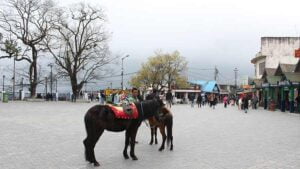
Darjeeling’s Chowrasta is a bustling public square in the heart of the city. Chowrasta, a term that means “four roads,” is characterized by showcasing four main roads merging at the base of what is now known as Karnataka. The vibrant streets of the city are a popular spot for locals and visitors to relax and enjoy the scenery.
Chowrasta is a hub of commerce, with an abundance of shops, boutiques, and restaurants. Local handicrafts, souvenirs, and benches are available for relaxing on the pedestrian-friendly paths or in the center of the square. With its vast landscaped gardens, it offers a picturesque backdrop to bask in the mountain breeze.
People also enjoy horse-drawn carriage rides that provide a laidback experience. In the picturesque hill town of Darjeeling, Chowrasta is a must-visit place for tea lovers and tourists alike.
12. Dali Monastery
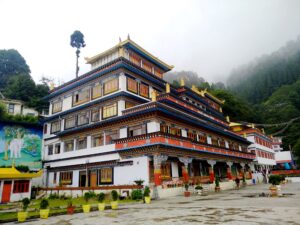
The slopes of Darjeeling are home to Dali Monastery, also known as Druk Sangag Choling Monakry, which is a symbol of the region’s rich Tibetan Buddhist legacy. Kyabje Thuksey Rinpoche founded a monastery that serves as both a sanctuary and an architectural wonder, drawing crowding and those seeking peace.
Located in the Himalayas, Dali Monastery boasts intricate Tibetan-style architecture, complete with colorful frescoes and elaborate carvings. In the main prayer hall, there is a gigantic statue of Avlokiteshvary that stands 5 meters tall, symbolizing compassion. The monastery’s tranquil atmosphere, adorned with prayer flags that clang in the mountain breeze, provides a serene setting for contemplation.
13. River rafting in Teesta

Darjeeling’s Teesta River offers river rafting opportunities that combine the thrill of exploring its turbulent waters with the scenic beauty of the Himalayas. The Himalayas are the starting point of Teesta, a thrilling event that takes place in the picturesque hills of Darjeeling.
Both beginners and experienced rafters can enjoy the diverse range of rapids on the Teesta River. Rafting stretches are available in different grades, with each grade offering a unique experience for those who prefer more rafting.
The excursion usually commences in the vicinity of Melli and can proceed to Teesta Bazaar, featuring areas with designations such as Molli Lower. Bardang. Rafting through lush forests, quaint villages and stunning scenery is the ultimate experience of a water-based adventure in Darjeeling.
Safety is a top priority for adventure activities, and rafting guides are on hand to ensure safety in all aspects. During the monsoon season, which can cause fluctuations in water levels, Teesta offers recommended river rafting times from September to June.
Teesta offers river rafting opportunities that provide an unparalleled view of Darjeeling’s natural beauty.
14. Monasteries in darjeeling

Several mesmerizing monasteries can be found in Darjeeling, a picturesque hill station situated in the Himalayas and known for its religious and cultural significance. The serene atmosphere and ornate architecture of these monastic retreats, which embody the core values of Tibetan Buddhism, fascinates tourists. The monasteries in Darjeeling are places of prayer, learning and meditation to preserve the rich Buddhist culture that has permeated the city.
Among the oldest monasteries in Darjeeling, the Mahakal Temple situated on Observatory Hill provides a breathtaking panorama of the surrounding landscape. The Karmaa Dorjee Chyoling Monastery, also known as the Bhutia Busty Monakshank, is another noteworthy location that showcases traditional Tibetan architecture and holds a diverse collection of Buddhist texts.
One of the most venerated monastic buildings is the Yiga Choeling Monastery, which boasts intricate murals and ancient manuscripts. Surrounded by mountains and calm, the Dali Monastery is a sight to behold.
These monasteries offer a unique perspective on the rich cultural heritage of Darjeeling and are ideally situated for soaking up the sun.
15. Tinchuley
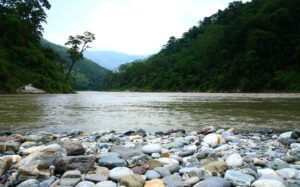
The quaint hamlet of Tinchuley is situated near the West Bengal-Sikkim border, approximately 32 km away from Darjeeling. At a height of 5550 feet, the hill station is named after the words ‘tin’ and _chula’ which means three ovens because it has several hills that look like they are mud oven. Surprisingly, the village’s geographical diversity is not negated by the proximity of the rivers Teesta and Ranjeet. Tinchuley’s abundance of natural beauty is partly due to this.
Despite its reputation for tea plantations and fresh fruit orchards, like Darjeeling, Tinchuley is quieter and less well-known compared to other places with bustling activity. Visitors to Tinchuley can experience rock climbing, trekking and sightseeing against a backdrop of verdant mountains that resembles peaks in movies. The involvement of the World Wildlife Federation (WWF) in modernizing the agriculture and concentrating on floriculture, vermiculture production, and organic products led to the rise of Tinchuley as an ideal tourist spot.
For those seeking a spiritual experience, Tinchuley is the place to go. The stunning mountainous terrain and peacefully cultivated areas are evidence of this. For those seeking something of that sort, you have your spot!
16. Darjeeling Observatory Hill
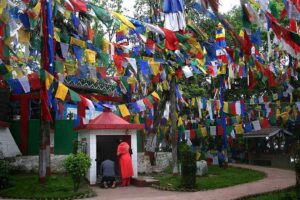
Darjeeling Hill is home to Observatory Hill, a rising hill situated above Chowrasta Square, approximately 2 km from the Darjeeling Himalaya railway station, just beyond the Mall Road. Among the most popular tourist destinations in Darjeeling are the Kanchenjunga Temple, Mahakal Temple, and Tibetian Memorial Shrine, which offer a breathtaking view of the mountains.
Tourists flock to the destination primarily for the thrill of mountainous experiences after embarking on a trek with religious pilgrims. Upon reaching Observatory Hill, tourists can spend approximately 15 minutes, and the steep uphill path leads to a small cave that is visited by temples. A plethora of flags and small shrines, with the peaceful sound of devotional belts fill the entire walk. It is suggested that older individuals rest on side benches during the tourist trail as it can be very arduous.
17. Trreking in Darjeeling
Offering a panoramic view of four of the world’s highest peaks. Darjeeling boasts some of the world’s most spectacular trekking trails, including the peaks of Everest, Kanchenjunga, Makalu, and Lhotse.
Among the popular trekking routes in Darjeeling are the Singalila range, Sandakphu & SINGALILA Trek, Phalut Trekking, and Sikkim Trek – Dzongri y Goechala.
18. Bengal Natural History Museum

A testament to the native flora and fauna of the area, the Bengal Natural History Museum boasts an impressive collection that exceeds 4000 specimens. This museum was initially a small building in the Botanical Garden designed to exhibit varieties of hill butterflies and birds, and it is now located at the Padmaja Naidu Himalayan Zoological Park in Darjeeling. The preserved remains of bird species, reptiles, insects, fishes, and mammals are exhibited today in their natural environments. Here is also a beautiful display of the different minerals from the area.
There are two floors of the museum and a basement section. The extensive assortment of animals showcases uncommon species like the Himalayan Brown Wood Owl, Northern spotted owlet, and Northern Brown Fish Owl. Birds have a vast assortment of nests and eggs to lay. The Bengal Natural History Museum has a taxidermy unit that manages the curing, stuffing, and preparation of birds and animals for display.
A diverse range of insects, such as butterflies, moths, dragonflies, and beetles are showcased. The museum’s small library houses a variety of books, including the 125-volume series ‘The Fauna of British India’.
19. Lamahatta Eco park
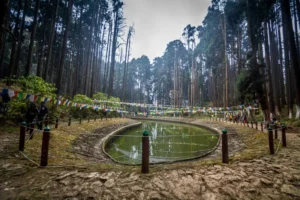
West Bengal’s Lamahatta village, located 23km from Darjeeling, is a picturesque location. In 2012, the Lamahatta Eco Park was established to exhibit the stunning views of mountains and rivers along with the dhupi and pine forests. The monastery, known as Lamahatta, offers a peaceful atmosphere that is tantamount to that of euphoria and harmony between humans. At a height of 5,700 ft. This eco-park has a lot to offer. Lamahatta is visible from the eco-park’s wooden and bamboo gazebos. White and yellow orchids are among the plants that thrive in the ‘Roadside Garden’, a meticulously maintained garden. Many homestays are located in the vicinity.
20. Lepchajagat

Lepchajagat is a small village located approximately 19km from Darjeeling. This village, which is considered a paradise for nature lovers and honeymooners, stands at 6,956 ft tall. The dense pine, oak, and rhododendron forests of this village provide a peaceful setting. It is a peaceful location to gaze at the Kanchenjunga peaks. A forest reserve is now where it belongs.
14 Best places to Visit in India for 2024 And All you Need to Know About.
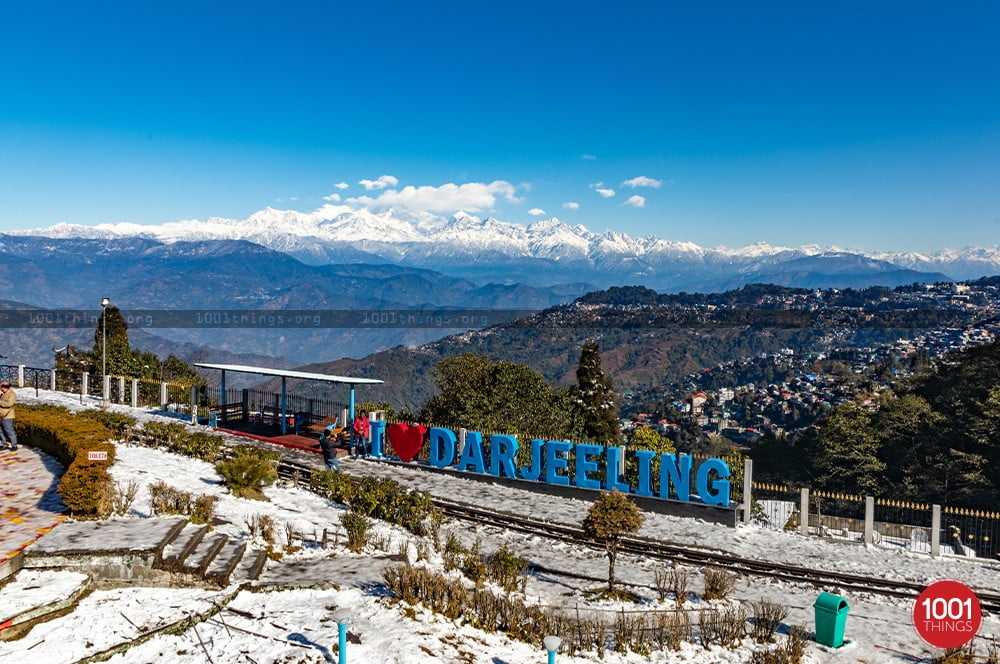
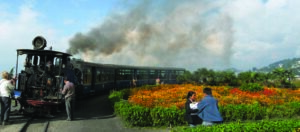
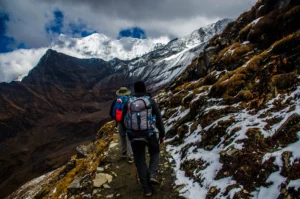
1 thought on “Darjeeling”